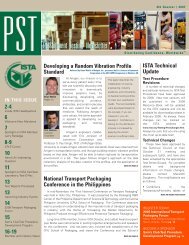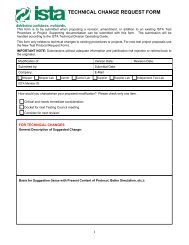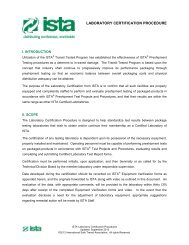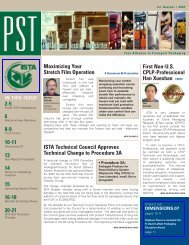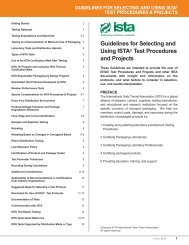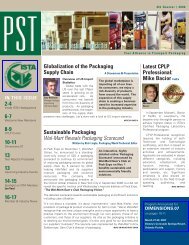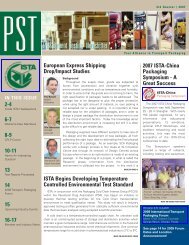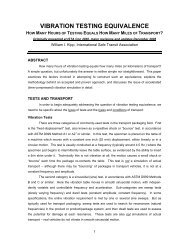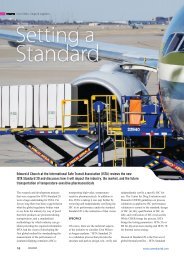Pallets 101: Industry Overview and Wood, Plastic, Paper & Metal ...
Pallets 101: Industry Overview and Wood, Plastic, Paper & Metal ...
Pallets 101: Industry Overview and Wood, Plastic, Paper & Metal ...
You also want an ePaper? Increase the reach of your titles
YUMPU automatically turns print PDFs into web optimized ePapers that Google loves.
Even though we live in an increasingly global community, most of our pallet sizes are still differentfor different regions of the world. For example, the 800 x 1200 EuroPallet, a st<strong>and</strong>ard sizethroughout Western Europe for 50 years, is a rare size in the rest of the world. There are trends,however, towards domestic <strong>and</strong> global pallet size st<strong>and</strong>ardization. In the 60’s <strong>and</strong> 70’s, the USgrocery industry began conversion towards the 48x40” st<strong>and</strong>ard footprint, <strong>and</strong> today this size isnot only st<strong>and</strong>ard in the grocery industry, but in many other industries as well. In 2002 the EIPSComputer <strong>Industry</strong> Pallet Task Group recommended the 1200 x 1000 mm size as its primaryglobal footprint (the 800x1200 is also included). This size was selected due to its metricdimensions, current recognition in ISO, the ability to efficiently fill most transport vehicles, <strong>and</strong>similarity in size to the 48x40-inch US footprint (5). Previously, this industry worked with dozensof pallet sizes <strong>and</strong> designs. It is expected that in the future, new computer industry warehouses,distribution centers, <strong>and</strong> shipping practices will be aligned with the st<strong>and</strong>ard. Imagine theefficiencies that will result for this industry over the coming decade. It is expected that theseefforts will continue in other industries due to the wholesale long term benefits throughout supplychains that result from st<strong>and</strong>ardization.Pallet TerminologyThere are 2 main types of pallet designs: block <strong>and</strong> stringer. This is true regardless ofpallet material. A schematic drawing of a stringer class <strong>and</strong> block class pallet, along with theindustry terminology for pallet components, is given below. Detailed pallet terminology can befound in the ASME St<strong>and</strong>ard for pallets (6).Stringer pallets are more common in the United States. With solid wood, block palletscost more to manufacture than the equivalent strength stringer pallets. The principal advantage ofblock pallets is full access on all 4 sides for both forklifts <strong>and</strong> pallet jacks (full 4-way). Stringerpallets allow only forklift entry on the sides if stringers are notched (partial 4-way entry). Ifstringers are not notched, pallet jacks <strong>and</strong> forklifts can only enter on the 2 ends <strong>and</strong> they arecalled “2-way.”The size of wood pallets is specified as the stringer length, followed by the deckboard length.Therefore, since GMA pallets have 48” stringers, they are 48x40-inch pallets, not 40x48-inchpallets. The size of block pallets is specified as the top stringerboard length, followed by thedeckboard length. Therefore, the EuroPallet is an 800 x 1200mm design. The size of non-woodpallets is typically listed as the longer length first, followed by the shorter dimension.<strong>Pallets</strong> <strong>101</strong>: <strong>Industry</strong> <strong>Overview</strong> <strong>and</strong> <strong>Wood</strong>, <strong>Plastic</strong>, <strong>Paper</strong>, <strong>and</strong> <strong>Metal</strong> OptionsJohn Clarke – Dimensions.04



